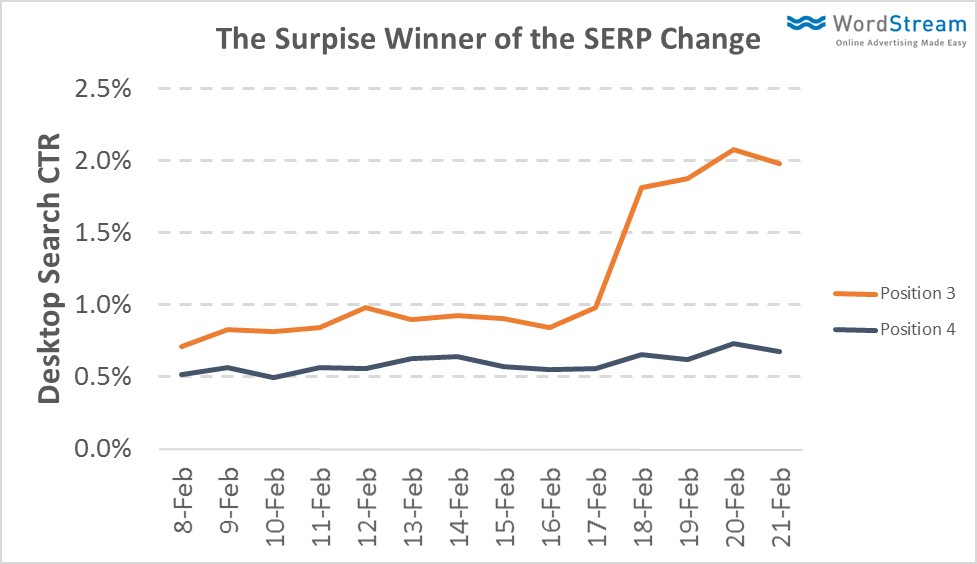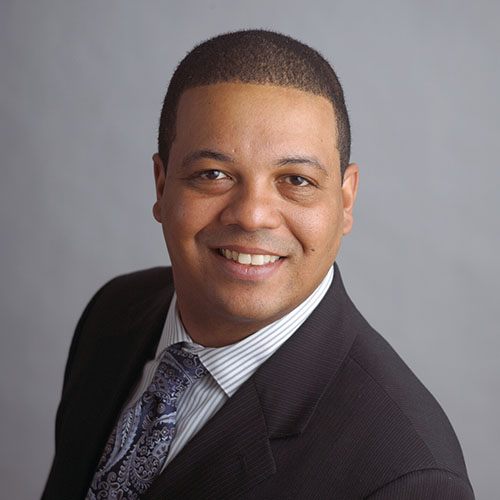Where Did The Right-Side Ads Go on Google?
The days of seeing Text ads appearing along the right side of the page are a thing of the past. Last month on February 18th, Google rolled out a global change to its desktop search results page (SERP) layout. As you can image the blogosphere went nuts, with many predicting certain doom. Don’t get caught up in the hysteria.
Search results change all the time. In fact, this change has been in the works for quite some time. This update may be Google’s attempt to standardize the advertising ecosystem, since right side ads are not supported on Mobile SERPs
What Really Changed?
Well, in a nutshell, Google cleaned up the clutter on the right-hand side of desktop SERPs. Google also added a fourth ad positon above organic search results on “highly commercial queries.” This would include broad terms like “hotels in nyc” and “airline tickets.”

How Will This Recent Update Impact Paid Search Performance?
Let the data speak for itself. When looking at WordStream’s customer data, which includes thousands of accounts across all industries, side and bottom ads only account for 14.6% of total clicks. It is also important to remember that this change only impacts desktop searches, which has been on the decline, only accounting for less than half of all searches.

Ad position #3 may be the biggest winner since the change.
What to Expect:
- Ads in Positions 1-3 may eventually see an increase in Cost per Clicks (CPCs) due to higher competition for top position spots. The size of the increase will vary based on search volume and competition (this has always been a risk).
- Ads in Positon 4 should see an increase in CTR, with more ads appearing above the fold. 4-ad blocks account for over one-third of all top ad blocks.
- Ads in the 5th -10th Positons will see a decrease in CTR and potentially conversions, as we often see lower page positioning resulting in lower yield percentages.
How to Improve Your Ad Position?
As a digital marketing agency, we are constantly reviewing campaign data for new trends and competitive advantages that we can capitalize on. Nothing’s changed there. We will continue to focus our efforts on driving meaningful traffic to your product or service.
Again, don’t panic. It is important for clients and campaign managers alike to keep a level head and not be reactive. There are a number of things to help improve your ad positioning that doesn’t involve handing over more money to Google. Arc Intermedia client’s – we’ve got you covered.
Just as before, your ad’s position on the page is determined by your bid, the components of Quality Score (expected clickthrough rate, ad relevance, and landing page experience), and the expected impact of extensions and other ad formats.
Improve Your Relevance – Make sure your keywords, ads, and landing pages are relevant to what customers are searching for. Irrelevant keywords, ads, and landing doesn’t mean your ad won’t show up, but just as before the update, you may not get as many clicks, resulting in poor performance over time.
Incorporate Ad Extensions – Win more auctions, increase your ad real-estate, and give users more reasons to click your ad at no additional cost. Google has shown that adding extensions to your ads increases your click-through rate (CTR). More clicks equal more potential customers. Not only that, if two competing ads have the same bid and quality, the ad with greater expected impact from extensions will generally appear in a higher ad position than the other.
Think Mobile – More and more users are searching on a mobile device. Right now mobile CPC prices are much lower than on tablet and desktop and have proven to drive conversions. And to support this mobile traffic, make sure your website or landing page is optimized for the mobile user and can easily perform the action you desire.
Data Measurement– Campaign measurement is critical. Be sure to pay closer attention to data following the SERP update. Impression share %, lost rank %, average keyword positions, cost-per-acquisition, and conversion rates should arm you with enough data to make the right decisions. Take steps to increase the impression share of keywords that have historically converted with high-quality scores (QS) and see positive results.
In conclusion, don’t panic! Rather, focus your efforts. If you need paid search help, we’re here for you.



